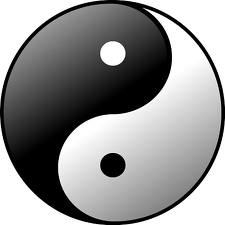 The Yin/Yang symbol is said to have been created by the followers of Lao Tzu who were known as Taoists. It expresses the concept of a universe that consists of two dominant forces–Yin and Yang–and reflects that these forces are in constant motion.
The Yin/Yang symbol is said to have been created by the followers of Lao Tzu who were known as Taoists. It expresses the concept of a universe that consists of two dominant forces–Yin and Yang–and reflects that these forces are in constant motion.
The wholeness of the Universe is symbolized by the circle. The color black reflects the Yin cycle–which refers to the night, the winter, feminine energy, and stillness. The color white reflects the Yang cycle–which refers to the daytime, the summer, masculine energy, and activity. The two are necessary for balance.
The essence of Yin and Yang is that we live in an ever-changing world and should go with the “flow” of change. Chinese sages also used the energy of Yang to represent heat and Yin to represent cold. Some interesting associations are:
YIN: Earth, Cold, Night, Winter, Passive, Softer, Flexible, Feminine
YANG: Heaven, Hot, Day, Summer, Active, Harder, Masculine.
Ancient Chinese medicine is based upon the concept of balancing Yin and Yang energy in the body. Feng Shui, the ancient philosophy of using natural elements and placement to balance energy in one’s environment, also involves the balance of Yin and Yang in addition to other applied principles.
In a future post, I will explore the application of Yin and Yang in ancient and modern society.
